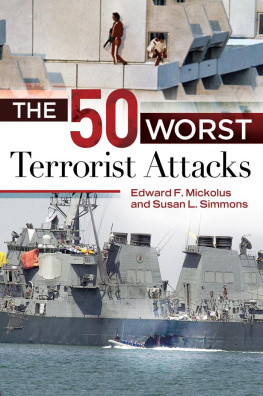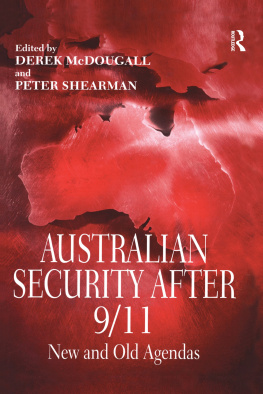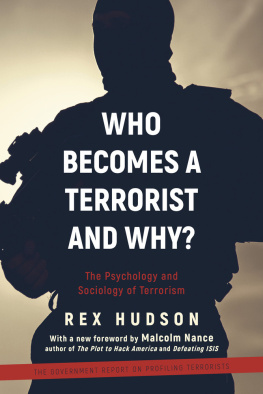The 50 Worst
Terrorist Attacks
The 50 Worst
Terrorist Attacks
EDWARD F. MICKOLUS AND SUSAN L. SIMMONS
Praeger Security International
Copyright 2014 by Edward F. Mickolus and Susan L. Simmons
All rights reserved. No part of this publication may be reproduced, stored in a retrieval system, or transmitted, in any form or by any means, electronic, mechanical, photocopying, recording, or otherwise, except for the inclusion of brief quotations in a review, without prior permission in writing from the publisher.
Library of Congress Cataloging-in-Publication Data
Mickolus, Edward F.
The 50 worst terrorist attacks / Edward F. Mickolus and Susan L. Simmons.
pages cm
Includes indexes.
ISBN 978-1-4408-2827-0 (hardback) ISBN 978-1-4408-2828-7 (ebook)
1. TerrorismHistory. I. Simmons, Susan L. II. Title. III. Title: Fifty worst terrorist attacks.
HV6431.M487 2014
363.32509dc23 2014004392
ISBN: 978-1-4408-2827-0
EISBN: 978-1-4408-2828-7
18 17 16 15 14 1 2 3 4 5
This book is also available on the World Wide Web as an eBook.
Visit www.abc-clio.com for details.
Praeger
An Imprint of ABC-CLIO, LLC
ABC-CLIO, LLC
130 Cremona Drive, P.O. Box 1911
Santa Barbara, California 93116-1911
This book is printed on acid-free paper 
Manufactured in the United States of America
All statements of fact, opinion, or analysis expressed are those of the authors and do not reflect the official positions or views of the CIA or any other U.S. government agency. Nothing in the contents should be construed as asserting or implying U.S. government authentication of information or Agency endorsement of the authors views. This material has been reviewed by the CIA to prevent the disclosure of classified information.
To our parents
Contents
Unfortunately, when considering international terrorism, any list of the worst is a living document, requiring continuous adjustment as new incidents occur. When this book was in final editing in late September 2013, three significant attacks needed to be reflected upon and evaluated for the 50 Worst list.
On Sunday, September 22, 2013, a bombing at a Protestant church in Peshawar, Pakistan, killed at least 85 people and wounded 141, numbers comparable to other attacks included in the list. The day before saw a wave of bombings in Iraq that led to 96 deaths and an al-Shabaab attack on the Westgate Mall in Nairobi, Kenya, that killed at least 62 people and injured 175 people, including many foreigners. Although the bombings entailed more deaths, the Kenya attack is a more important milestone in the maturation of international terrorism. Al-Shabaab demonstrated that although it was riven with factionalism, it was able to assemble a multinational strike team that could engage in a sophisticated operation outside its primary sanctuary, involving multiple attack points and a more nuanced style of attack. Not limiting itself to a straightforward multipledeath bombing, al-Shabaab used the Westgate attack to seize international headlines for several days, likely establishing its credentials as a group worthy of its new al Qaeda affiliation and attractive to wannabe jihadis as capable of daring exploits.
Sadly, the use of terrorism by an individual or group to attempt to achieve political ends continues to gain traction. Whether or not terrorism is an effective coercive tactic in the short term continues to be debated. As a long-term strategy, terrorism can only achieve a Pyrrhic victory so the stated motives of anyone choosing to perpetrate an act of terrorism must be questioned. Destroying lives is the ultimate price and takes resolute malevolencenot virtue or justice.
What we need are nations filled with Malala Yousafzais.
We welcome comments from our readers, particularly regarding refining the criteria for inclusion, which incidents we might have missed, and any other contributions you have. Please send them to us in care of ABC-CLIO.
This book is a different writing experience from our previous reference texts and required more patience from family and friends, and the great team at ABC-CLIO. We particularly wish to acknowledge and thank Steve Catalano and Robin Tutt of ABC-CLIO, and Linda Kay Berglund, Susans sister, who assisted with the indexing.
During the last 50 years, the world has seen the rise of a particularly virulent threat to international orderterrorist attacks. The theory and several methods of terrorism have long histories, arguably tracing to the Old Testament with the first political assassination; however, the use of terrorism by nonstate actors on so grand a scale is a comparatively recent phenomenon. The authors have written several volumes chronicling transnational terrorism, and we are often asked to rank events according to most important, worst, deadliest, or an alternative superlative. So far we have refused to do so, being hesitant of trivializing these horrific, shocking, and destructive acts. We changed our minds as we found that the reverse may be a more present danger. As a global community, we are so awash in terrorismthrough news, academic articles, government reports, fiction and nonfiction books, films, and television showsthat we are at risk of accepting a general climate of terrorism in which we stop recognizing the individual acts and stop feeling for the reality of the victims. To end terrorism, we must not become inured to terrorist acts. This book attempts to direct attention again to individual acts by listing the most important terrorist attacks in history by year within each decade from 1960 to 2013, including the incidents, key actors involved, victims, and government responses. Both domestic and international terrorist attacks are examined within security and political contexts to shed light on how the events unfolded.
We begin this books examination of terrorism with the 1960s, because of that decades importance in the evolution of terrorism on several fronts. The 1960s saw the end of the Algerian insurgency, which featured terrorism on a seemingly unrelenting scale. The rise of the Palestinian struggle, with the commencement of different styles of attacks by Fatah, the leftist Popular Front for the Liberation of Palestine, and various splinter groups, moved international terrorism to the front pages. Turbulence in the West, spurred by a youthful radical leftist movement, led to the rise of major terrorist groups who went on to infamy for their exploits in the following decades. Types of attacks evolved with the growth of the new groups. Aerial hijacking in the 1960s moved from mere lone nut and simple take me to (name a country) transportational capers to more complex operations designed to garner media attention and general horror. Kidnappings of political figures and business executives for more than mere financial gain grew.
This book uses the definition of terrorism that we have found useful in our previous books. We consider terrorism to be the use or threat of use of violence by any individual or group for political purposes. The perpetrators may be functioning for or in opposition to established governmental authority. A key component of international terrorism is that its ramifications transcend national boundaries, and, in so doing, create an extended atmosphere of fear and anxiety. The effects of terrorism reach national and worldwide cultures as well as the lives of the people directly hurt by the terrorist acts. Violence becomes terrorism when the intention is to influence the attitudes and behavior of a target group beyond the immediate victims. Violence becomes terrorism when its location, the victims, or the mechanics of its resolution result in consequences and implications beyond the act or threat itself.












